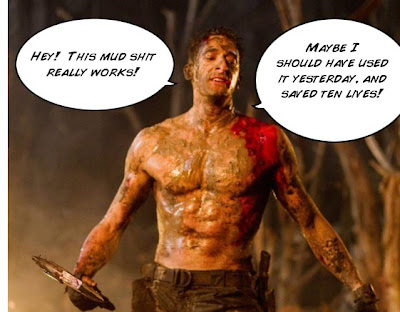I don’t have as much experience pitching as I’d like. Having said that, I have more than those who’ve never done it before, and I’m a quick learner.
This week I pitched a horror film script of mine to three Hollywood studio professionals. I learned a lot, and it reinforced some of the things I’ve learned about pitching. I thought this would be a good time to put those ideas down, and share them with you if you are thinking about pitching something.
Rule #1 - It’s Not About You!
When it’s your job to listen to ideas all day long and decide if what you are hearing is something your company wants to invest a LOT of money creating, and most of what you hear is bad, you’ll want to be engaged within ten seconds or you’ll have a desperate urge to go on to the next person.
What you are selling is the idea, not yourself. So don’t go talking about your experience, and what your credentials are. No studio is going to option your idea because you’re this awesome person. If they want to know about you, they’ll ask! They’re looking for an idea, not a person, so give them what they want.
Rule #2 - Formatting
I found that the most successful pitch format I’ve come up with, so far, and it follows this format (These are my terms):
Title
Always start off with the Title. A good title can pique the interest of the listener immediately.
The Hook
The Hook starts with your once sentence description of your story, and then describes aspects of your story that don’t get conveyed solely by the plot. What makes this story unique?
The Plot
Don’t be stingy, the listener wants to hear how the story begins all the way to the end, but for the love of Zeus be brief! Just talk about the major events without getting bogged down in details.
A Summary
Finally summarize why you think this idea is something that will connect with your audience, and what makes it so special.
Rule #3 - The Hook
The importance of the Hook can’t be overstated. It’s an elusive thing that can be very difficult to come up with. It’s hard to use the right words that describe your idea when it’s obvious in your head. Talk about the genre, if it’s different from the usual, state why? What other films is it like? What does your main character need, and what do they achieve by the end? What is this story trying to say? Asking these questions will help you figure out what to say with your Hook. It’s a good idea to practice by saying your pitch to people who haven’t heard of your idea. Listen to the consistency of the misconceptions you will hear. It’s a great way to realize stuff you left out.
Rule #4 - Length
You may have as little as 30 seconds to 10 minutes of time with the person you’re pitching to, so be prepared to vary the lengths of your pitch. In the case of a 10 minute pitch, I usually write one and a half pages of text as my base. At that length, depending on how quickly you speak, you’ll run about 5 to 6 minutes. I’m not convinced any pitch needs to be 10 minutes in length. You should be able to give the listener the gist of the idea in 5-6 minutes, and if you have time left over, they can ask questions. Trust me, they will appreciate your briefness if the pitch is accurate and professional, especially if it’s something they want to pass on.
Rule #5 - Don’t Read
You can’t engage your listener if you’re constantly looking down at your papers. You want to know your pitch by heart, and practice saying it to an audience.
Rule #6 - Listen and Know How To Listen
Most people will give you solid, extremely useful advice on your pitch that you NEED to listen to, but it’s also important to remember that everyone is different, and no one interprets words as they are written in the dictionary. All people bring their own baggage to what they hear, and it’s important to see that this will affect how your pitch is interpreted. This is probably the hardest thing to navigate, because sometimes the words you use will have a negative impact on the listener that you can’t avoid. The trick is to listen to the responses and find the right words that have the best CHANCE to elicit the idea you need to get across.

